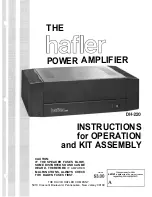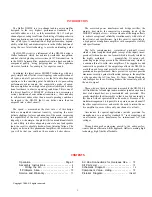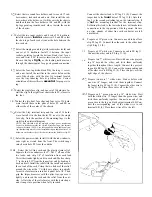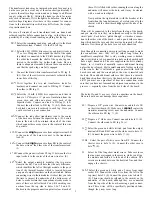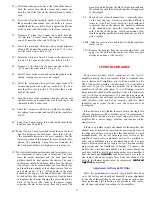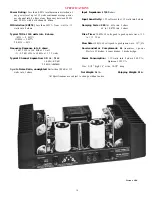
INTRODUCTION
The Hafler DH-220 is a two channel audio power amplifier
designed to the very highest performance standards. It is
available either as a kit, or fully assembled. Its 115 watt per
channel power rating is sufficient for driving all loudspeakers in
home applications, and its design assures extremely low distor-
tion of all types. A combination of high performance, depend-
ability, reliability, and moderate price is in the Hafler tradition of
using the very latest technology to provide outstanding value.
The DH-220 circuit is a refinement of the DH-200 design, a
Hafler landmark which has achieved worldwide recognition,
and has elicited glowing reviews since its 1979 introduction. As
in the DH-110 preamplifier, particular attention has been paid to
component quality, using polypropylene or film capacitors
wherever feasible, for example, for superior sound.
Combining the latest power MOSFET technology with uni-
quely simple and effective circuit topology reduces distortion of
all types, and at all power levels, over the full audio frequency
spectrum, to the vanishing point. In addition to its pace-setting
performance achievements, the conservative mode of opera-
tion accomplishes a new high in long term reliability and excep-
tional resistance to abusive operating conditions. This is one of
the direct benefits of MOSFET utilization in overcoming a
serious limitation of conventional transistors - their tendency
to self-destruct under other than normal operating conditions.
So rugged is the DH-220 that it can deliver more than ten
amperes into a short circuit!
The speed - measured as the slew rate - of this design
delivers unmatched transient linearity, revealing the most
delicate shadings, textures and nuances of the music, surpassing
the capabilities of the most revealing loudspeakers and cart-
ridges by a wide margin. Coupled with its unconditional stabili-
ty, and ability to deliver adequate power into any loudspeaker
load, the result is absolute freedom from listening fatigue. The
longer you listen to this phenomenal amplifier, the more certain
you will be that you could not have made a better choice.
The oversized power transformer and bridge rectifier; the
massive heat sinks; the conservative operating levels of the
MOSFET output devices - all are evidence of the design efforts
to achieve exceptional reliability simultaneously with state of
the art sonics and specifications. And this circuit is convertible to
a high power monophonic amplifier with comparable stability
and specifications.
The fully complementary, symmetrical push-pull circuit,
which is direct coupled throughout (except at the input), incor-
porates all silicon devices in a format which is directly related to
the highly acclaimed
DH-110
preamplifier. Its unique self-
protecting output stage prevents the thermal runaway which is
a common threat to solid state amplifiers. The ruggedness and
conservative operation of the output stage allows the DH-220 to
avoid the need for special protective circuits which could com-
promise audio performance. Basic protective systems provide
maximum security against malfunction damage to the amplifier
or the speaker: the AC line fuse, B + fuses, thermal breakers,
and loudspeaker fuses. Nothing hinders the essential purity of
the audio signal.
Those who use these instructions to assemble the DH-220 kit
will find that the left and right audio modules (printed circuit and
heat sink assemblies) are preassembled and pretested. This
greatly simplifies the kit assembly so that it can be done in only a
few hours without special skills or know-how. Because of the
modular arrangement, it is possible to operate on one channel if
the other requires service, and avoids the need to return the en-
tire amplifier in cases where only one channel is at fault.
Accessories for special applications include provision for
monophonic use; a panel for standard 19” rack mounting; and
an alternative power transformer for international AC line
voltages.
Through advanced engineering geared to the audio perfec-
tionist, and an efficient no-frills approach, Hafler is making high
technology high fidelity affordable.
CONTENTS
Operation . . . . . . . . . . . . . . . . . . . . . . . . Page 3
Assembly Instructions .................. 4
Wiring the Kit ..................... 6
If Problems Arise. ..................... 10
Service and Warranty ................. 11
AC Line Connections for Overseas Use. ..
12
Kit Parts List ........................ 13
Schematic Diagram ..................
1 4
Component Value Listing. ............. 15
Pictorial Diagram. ................. Insert
Copyright 1984, All rights reserved.

